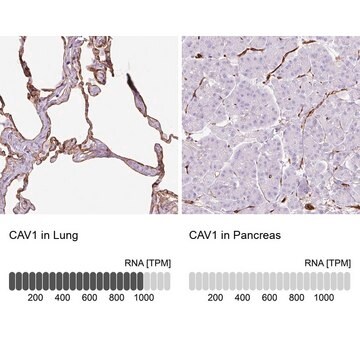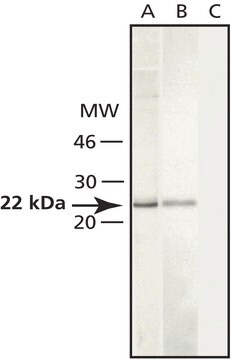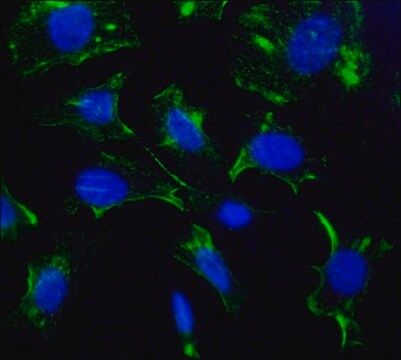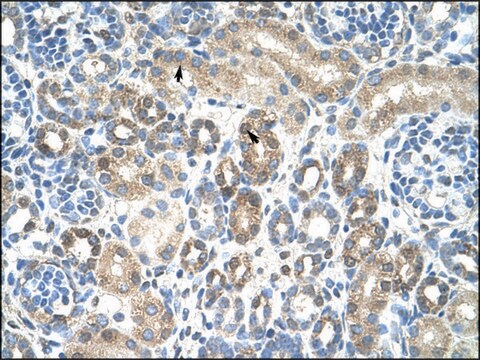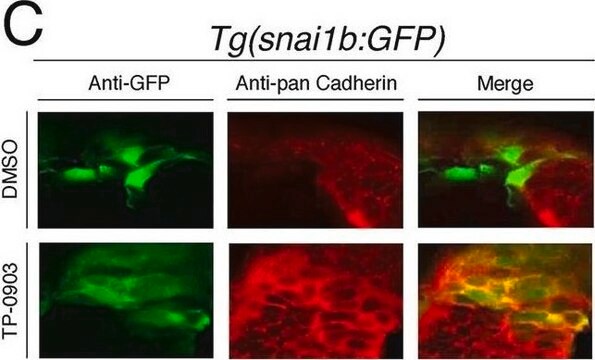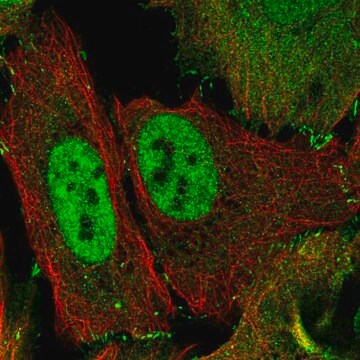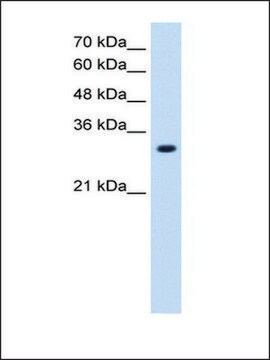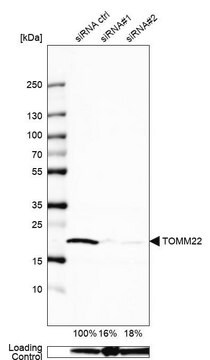C3237
Anti-Caveolin-1 antibody produced in rabbit

IgG fraction of antiserum, buffered aqueous solution
Sinônimo(s):
Anti-Caveolin-1, Anti-VIP21
About This Item
Produtos recomendados
fonte biológica
rabbit
conjugado
unconjugated
forma do anticorpo
IgG fraction of antiserum
tipo de produto de anticorpo
primary antibodies
clone
polyclonal
forma
buffered aqueous solution
peso molecular
antigen 22 kDa
reatividade de espécies
human, rat, mouse
validação aprimorada
independent
Learn more about Antibody Enhanced Validation
técnica(s)
indirect immunofluorescence: 1:500 using mouse fibroblast NIH3T3 cell line
microarray: suitable
western blot: 1:2,000 using whole cell extract of the human umbilical vein endothelial HUVEC cell line and the rat fibroblast Rat-1 cell line
nº de adesão UniProt
Condições de expedição
dry ice
temperatura de armazenamento
−20°C
modificação pós-traducional do alvo
unmodified
Informações sobre genes
human ... CAV1(857)
mouse ... Cav1(12389)
rat ... Cav1(25404)
Procurando produtos similares? Visita Guia de comparação de produtos
Descrição geral
Especificidade
Imunogênio
Aplicação
- indirect immunofluorescence
- in confocal microscopy
- western blotting
Ações bioquímicas/fisiológicas
forma física
Exoneração de responsabilidade
Não está encontrando o produto certo?
Experimente o nosso Ferramenta de seleção de produtos.
Código de classe de armazenamento
10 - Combustible liquids
Classe de risco de água (WGK)
WGK 1
Ponto de fulgor (°F)
Not applicable
Ponto de fulgor (°C)
Not applicable
Certificados de análise (COA)
Busque Certificados de análise (COA) digitando o Número do Lote do produto. Os números de lote e remessa podem ser encontrados no rótulo de um produto após a palavra “Lot” ou “Batch”.
Já possui este produto?
Encontre a documentação dos produtos que você adquiriu recentemente na biblioteca de documentos.
Nossa equipe de cientistas tem experiência em todas as áreas de pesquisa, incluindo Life Sciences, ciência de materiais, síntese química, cromatografia, química analítica e muitas outras.
Entre em contato com a assistência técnica